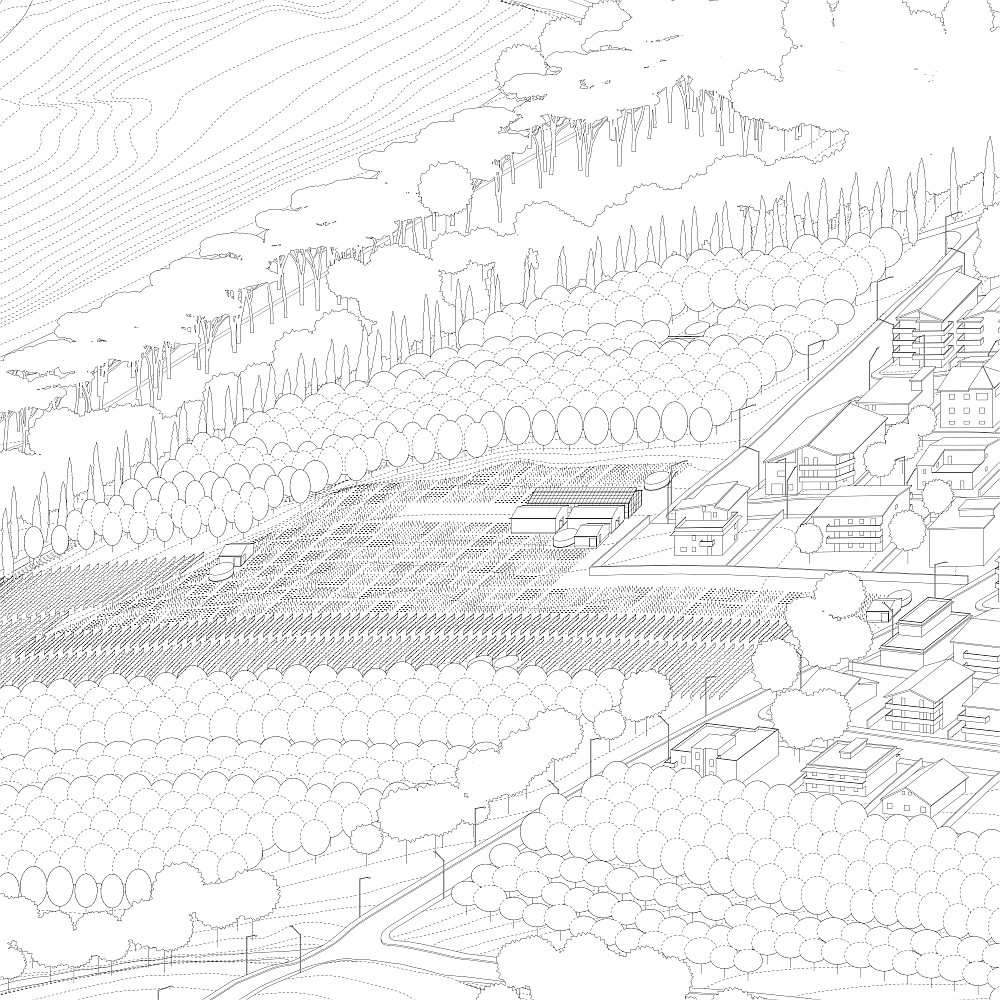OMNIA SUNT COMMUNIA
Location: Rome
Type: Academic
Status: Concept Design
Program: Residential, Co-operative living
Instructor: Pier Vittorio Aureli + Emily Abruzzo
Year: 2018
Today the city of Rome differs very little from that of its ancient counterpart, the city in both times was founded on the exploitation of the surrounding landscape. In ancient times this exploitation was mainly agricultural, the production of grains, fruits, oils, grapes and wine was the leading driver for the economy. In modern times that exploitation takes the form of real estate speculation, financial lending models and wage labor practices. These forms of territorial appropriation vassalize and depress the lands around the city, whether it is adjacent agricultural lands of the Agro or the extents of the entire Apennine Peninsula. While the physical form of the city today differs vastly from ancient times, modern Rome still relies on the same imperial apparatus that it’s ancestor did.
The Agro has historically been defined by its dependence on the city. A reliance that persists today in the form of illegal suburban development paired with a depressed commuting labor force. These workers are reliant on work activities in the city and have lost any proper relationship to the surrounding rural landscape. This proposal argues that the Agro holds an opportunity for a new kind of domestic living that severs the economic dependence of the toponimi from the city. In this area, the typical sprawl of the toponimi is surrounded by idle uncultivated land. The expansion of these settlements creeps into this land and cuts it off the rest of the city. This is a type of landscape that exists in older parts of the city and Zapatta Romana, a community garden organization, provides precedent for intervention.
This proposal seeks to liberate these illegal settlements from their economic dependence on the city by reclaiming the means of domestic production through commoning the surrounding natural environment. Taking advantage of the unused agricultural land in the area, the proposal appropriates this land for the collective use of the settlement, establishing a commonwealth and defining commoning boundaries between closed, open and free access resources within the landscape. This urban strategy takes the form of communal allotment gardens and collective greenhouses, orchards, vineyards, workshops, and other communal resources.
Large Axo
Large Axo
Small Axo
Small Axo
Small Axo
Elevation
Elevation
Perspective
Perspective









